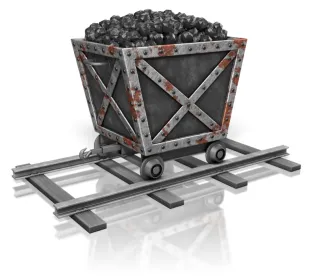Coal haulage machines and scoops operating in working sections of underground coal mines will be required to be outfitted with proximity detection devices on a phased-in schedule if a proposed rule issued by the Mine Safety and Health Administration is finalized.
Proximity detection is a technology that uses electronic sensors to detect motion and the distance between a miner and a machine. All four MSHA-approved proximity detection systems include machine-mounted components and a miner-wearable component. These systems provide distinctive audible and visual warnings and automatically stop moving machines before injuring miners who come too close to them.
“This proposed proximity detection system rule would better protect our nation’s miners from being crushed or pinned in confined underground mine spaces where large equipment is constantly in motion,” MSHA Assistant Secretary Joe Main said in a statement accompanying release of the proposal on September 2. “We know this technology works ….” According to the agency, nine deaths have been reported in 41 pinning, crushing, or striking accidents involving coal hauling machines and scoops over the five-year period ending in 2014. Between 1984 and 2010, 33 miners died in such accidents, MSHA said.
Coal haulage machines, which include shuttle cars, ram cars, and continuous haulage systems, are self-propelled and are used to transport coal. Scoops refer to self-propelled general utility vehicles used to clean up loose coal or debris and to move supplies or equipment. Since this equipment is rarely used in longwall working sections, those areas would be exempt from the rule. The working section includes all areas of the coal mine from the loading point of the section through the working faces.
Under MSHA’s proposal, proximity detection devices must meet a number of criteria. Besides stopping automatically before contacting a miner and providing audible and visual warning signals when a miner gets too close, there must be a visual signal to indicate the system is functioning properly. If any machine-mounted component is not functioning properly, the system must be designed to prevent movement, except for repairs. The system must also prevent adverse interference with or from other electrical systems and be installed and maintained in proper operating condition by a trained individual.
Compliance would be required eight months after the new rule goes into effect for new coal hauling machines and scoops manufactured after the effective date of the rule, and for any such equipment outfitted with an existing but non-compliant proximity detection system which can be modified underground. Compliance would be expected 36 months after the effective date for equipment containing an existing but non-compliant proximity detection system that cannot be modified underground or needs to be replaced with a new proximity detection system. Equipment lacking proximity detection and manufactured before the effective date of the rule also would fall under the 36-month schedule. The proposal also mandates periodic system checks by designated individuals and records kept of such checks, any defects noted, and information on individuals trained in system installation and maintenance.
MSHA estimated its proposal would prevent 15 fatalities and 70 injuries over 10 years and would provide annualized net benefits of between $2 million and $8.5 million. The proposed rule would further result in additional unquantified savings to mine operators by avoiding some of the production delays typically associated with mine accidents, according to the agency. The rule complements a similar rule covering continuous mining machines in underground coal mines that MSHA promulgated in January.
In a clear indication that a mandate may be coming to extend the technology even further into mines, MSHA is requesting comments on whether proximity detection should be required on any mobile machine on or off the working sections of underground coal mines and in underground metal and nonmetal mines. Comments are to be submitted electronically by December 1, 2015, through http://www.regulations.gov, citing either RIN 1219–AB78 or Docket No. MSHA–2014–0019. A schedule of public hearings is to be announced soon.



 />i
/>i

